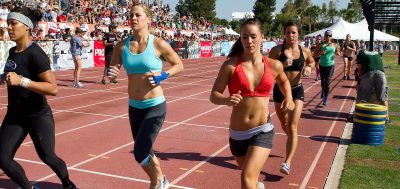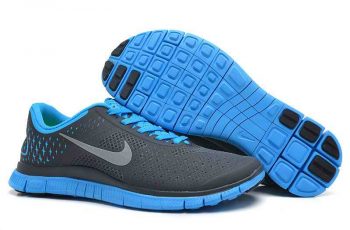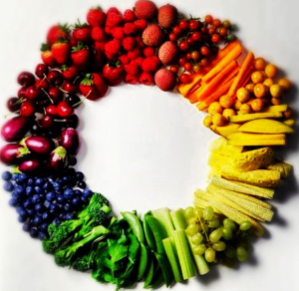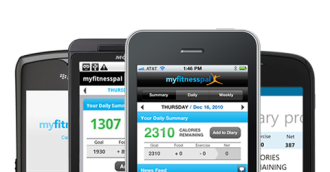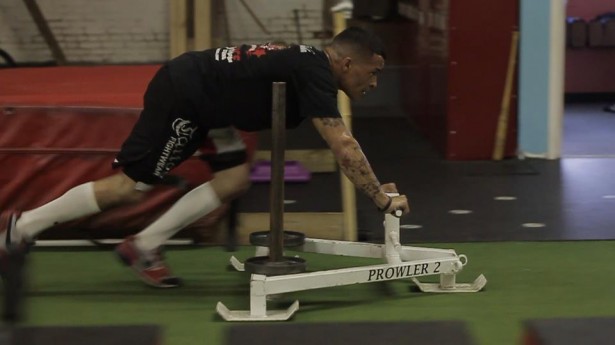If you are training for a Spartan Race, half marathon or even a triathlon or are just looking to boost your overall endurance as an athlete then there are some things you can to make sure you get the most out of your endurance training.
When it comes to building endurance just winging it will only get you so far, but if you are prepared and have a plan you take yourself even further than you thought you could. So follow these tips to prepare yourself for great endurance and stop winging it.
Related: How to Run Your Fastest 5k Ever
1 Stay Hydrated
This tip may seem obvious to many of us but there are always some people who end up having to pull-up at a race due to cramping or worse yet end up collapsing. Always make sure you are properly hydrated for your training as well as your events so you can be safe and so you can go the distance. Make sure to drink 6-8 8oz glasses of water per day and 16-24oz before your workout or event.
2 Get Your Sleep
Endurance training can be exhausting as you probably know. This is why you need to get your rest. Sleep is where your muscles recover and rebuild after a tough workout and if you are not getting enough sleep then you are getting the recovery you need. Not to mention if you are not well-rested you will not be in the mood to train and you are more likely to skip workouts or end up with a half-assed workout that doesn’t do you much good. Try to get 8 hours of uninterrupted sleep each night so your body and mind can be ready to train.
3 Eat Quality Carbs
When you are doing endurance training you are going to need a lot of energy. The glycogen stores in your muscles, brain, and liver will be depleted and they will need to be replenished after training.
Try to consume 2-3 grams of carbs per pound of body weight per day. Be sure to eat good carbs too like oatmeal, brown rice, sweet potatoes, yams, whole grain pasta, veggies, and whole fruits. Avoid junky carbs like candy, pastries, soda pop, potato chips and the like, they won’t really do your body any favors.
4 Warm-up Thoroughly
Many runners will just start cold or do a few stretches and consider themselves good to go. That isn’t always a wise move though.
What you should do is mix in some dynamic exercises like body squats, planks, lunges, and push-ups. Studies have found that dynamic movements like these help to prevent injury, stimulate the nervous system and increase mobility.
5 Use Proper Footwear
This one is really important, foot injuries and plantar fasciitis can leave you sidelined for a long time. If you are a high school age runner you may not yet have realized the importance of have good shoes yet but as you age and put more mileage on your feet the shoes you are wearing becomes incredibly important, just wearing any old pair of running shoes you can find at Dick’s Sporting Goods won’t always work and getting a bad pair of shoes can cost you dearly.
Do yourself a favor and go to a store where someone can see how you walk/run and analyze your needs to help find a shoe that is made for your type of feet and your gate. This can make a huge difference in how your feet feel and also prevent injuries.
Another thing to consider would be getting some good insoles to help match the needs of your feet as well. It can be tough to find insoles that do the job but if you do they can really help. I just got a pair of insoles for people with high arches and they have really helped with my foot pain. I went through a lot of trial and error to find insoles that actually worked but eventually found some that really help. My best advice would be to avoid the cheap ones, they do next to nothing. Go to a store for runners or a sporting goods store and see what they have, the insoles they sell at the drug stores are worthless.
6 Use Interval Training
Your body has three energy systems that you use during training. These systems are the ATP-PC, oxidative and glycolysis systems. The three systems are responsible for providing energy during short, medium and long-distance training. It is best that you have all three of these energy systems well trained for optimum performance.
This makes interval training a great choice for you to mix into your training. Many studies have shown that interval training increases your VO2 Max and also reduce injuries by lowering the training volume.
7 Get Plenty of Protein
Diet is important to athletes of all kinds. Many endurance athletes make the mistake of eating mostly carbs to replace all of the glycogen they burn up with training and neglecting their protein needs.
While protein is something many endurance athletes overlook it is something you should really consider because endurance athletes really break down their muscles with training and you need protein to build your muscles back up to be stronger and help you recover from training. Good sources of protein include chicken breast, lean cuts of beef, eggs, greek yogurt, and fish. A good protein shake can also give you a quick shot of protein and they are also very convenient for people with a busy lifestyle.
8 Don’t Forget to Strength Train
While most of your training will be doing will be endurance training you should also be sure to mix strength training in with your routine.
While you don’t need to be lifting massive amounts of weight like a strongman it pays to put in your time in the weight room. This is because strength training has been shown may help endurance athletes in terms of muscle power and performance. Strength training can also help prevent injuries, increase sprinting speed and energy. Plus there is nothing wrong with having some athletic muscle.
9 Quality Training Over Quantity
One thing to watch out for when endurance training is running yourself into oblivion with too much training. The old more is better mentality isn’t always the best way to go.
The problem with the more is better method is it can lead to overtraining. You would be better off going with a detailed program for 8-12 weeks tracking your progress. This will lessen your chance of overtraining which can lead to injuries that will have you sidelined for even longer.
10 Eat Your Fruits and Veggies
We have already covered the need to get your carbs and your protein but you should also focus on getting your fruits and veggies. In particular the colored ones.
These are helpful because the stress of training can load up your body with free radicals which can lower the bodies ability to recover. Snacking on colorful fruits and vegetables that contain high amounts of anti-oxidants helps to get rid these free radicals.
11 Change Up Your Training
Perhaps you have heard the saying “If you do what you’ve always done you’ll get what you’ve always got.” This statement is very true especially when it comes to training. If you keep doing the same routine over and over it is going to be less and less effective over time. This is why you need to change things up and add things like training on hills, doing sprints and using interval training to keep your body from adapting to your training method. Change it up and take your endurance to the next level.
12 Try Beet Juice
While it may not sound all that appetizing to some beet juice can help with boost endurance. This study showed that nitrate-rich beet juice helps boost endurance by up to 16%.
Beet juice boosts endurance because the nitrates in beet juice lead to a reduction in oxygen uptake which makes exercise less tiring.
In the study, the participants drank 500ml of beet juice for 6 consecutive days before they were tested, while you might not want to actually do this you can try it the night before and day of competition for an edge.
13 Use Technology
Tracking your training and diet can be a huge help. Apps like Nike+, Stava, and myfitnesspal can be a huge help.
Nike+ and Stava allow you to track distances and times, set goals for yourself and compare performances to keep you motivated.
Myfitnesspal is like your own dietician tracking your calories, carbs, fat, protein and sugar. It also logs your food for you and you can keep diet and weight loss goals.
Also, try wearing a Garmin or a Fitbit which will track your training activity as well as your overall activity throughout the day for steps taken, distance traveled, elevation differences and more.
Get your inner geek on with technology and take your endurance to new heights.

